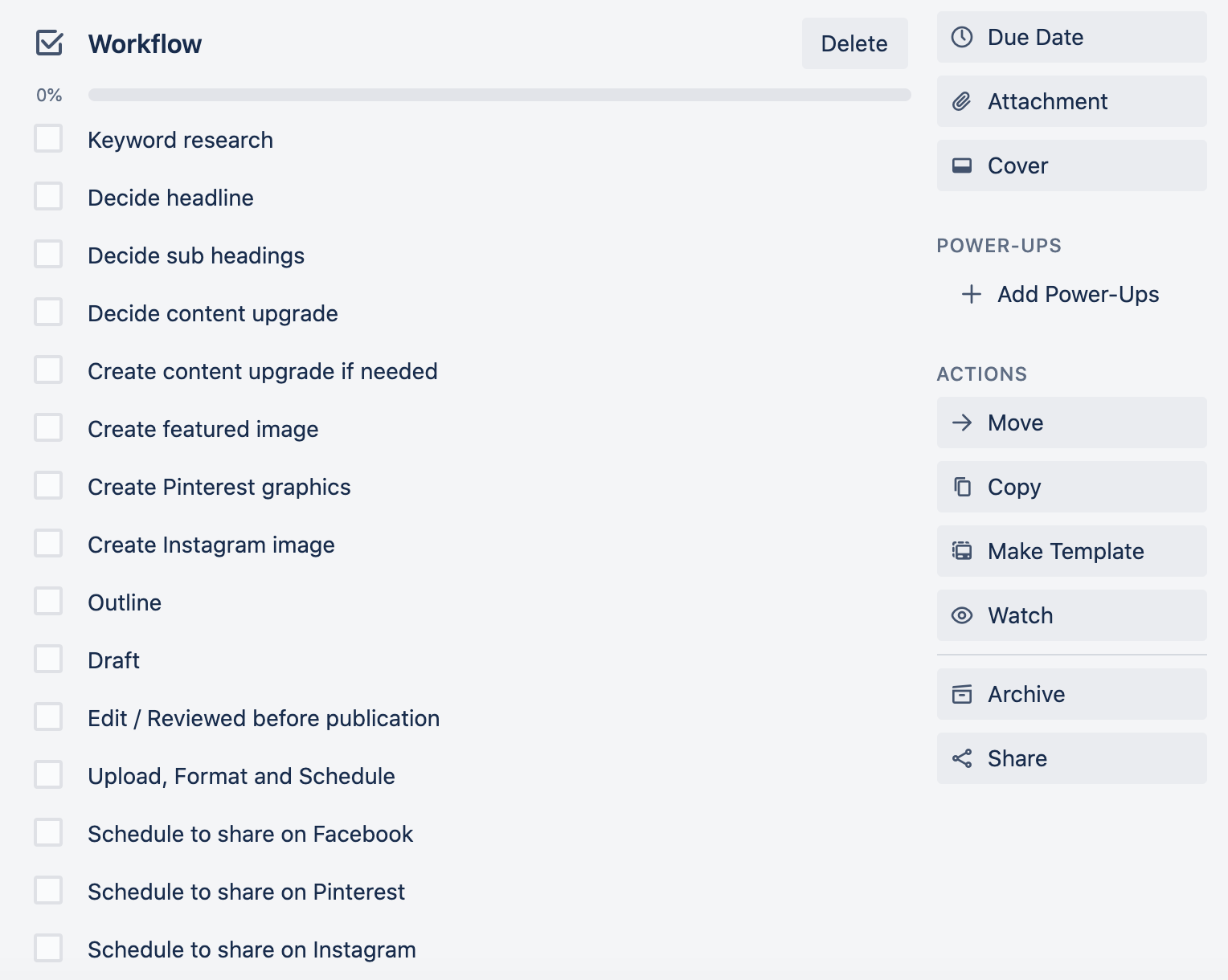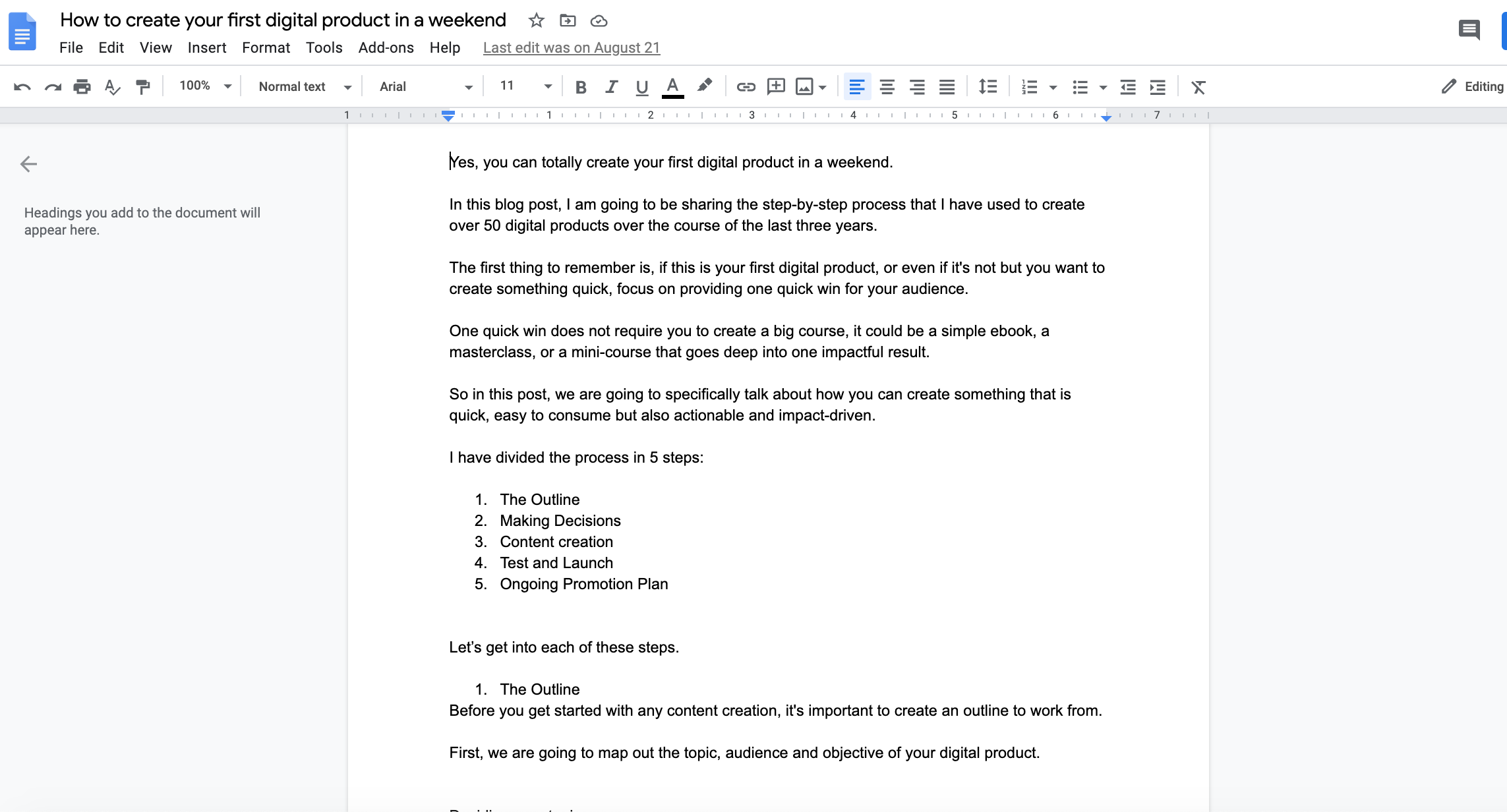Have you ever opened your Google doc or Word doc to a blank screen and wondered what to write and where to start?
That was the story of my life, every Wednesday, when I started writing a new blog post.
How to write a blog post fast is probably the last of your worries because you are still struggling with what to write and how to get started.
Writing a blog post from scratch, week after week, can seem time-consuming and overwhelming.
I write blog posts for 3 of my own blogs, while working with clients, working full time and constantly up-leveling my skills.
So trust me when I say that I know how difficult it is to not burn out with all the content creation.
In today’s blog post, I am sharing the strategies that I have experimented with, and used in my business to make sure that I not only enjoy the process of content creation and know what to write, but also write blog posts fast.
Let’s get into the steps:
Templatize as much as possible
Never start with a blank screen
Create a blogging workflow
Creating a blogging workflow was one of the most transformational processes for my business, in terms of efficiency and productivity.
Having a blogging workflow can help you redundant tasks on your list and it gives you a 20000 feet overview of tasks that take a lot of time and can be outsourced.
I should also mention that a blogging workflow comes in handy when you are looking to hire a virtual assistant or when you decide to outsource some of your blog tasks such as social media scheduling, graphics etc.
So how do you create a blogging workflow?
The first step is to brain dump all the steps you go through when starting work on a blog post.
Things like keyword research, deciding the title, graphics, subheadings, URL, etc.
Then organize these tasks in ascending order and make sure you are not missing out on any tasks.
Add these tasks to a project management tool as a checklist.

There you have it. Use this checklist every time you start a blog post.
The next step in this process would be to batch these tasks and have a workflow for lets say 5 blog posts.
For example, the first task in this workflow would be to batch keyword research for 5 blog posts. The next could be decide the title for 5 blog posts, and so on.
Batch similar tasks to write a blog post fast
Context switching can be really harmful for productivity.
The best way to improve your productivity when it comes to writing blog posts, is by batching the same tasks together.
So, if you write 4 blog posts a month, you could do the keyword research for the 4 blog posts at once, decide the URL of the 4 posts together, and so on.
I generally like to batch 8-10 blog posts together so I am saving a lot of time when compared to performing tasks sequentially for each blog post.
Here are some of the tasks you can batch together:
- Keyword research
- Creating blog outlines
- Creating blog and social media images
- Social media scheduling
Templatize as much as possible
The easiest way to save time with repetitive blogging tasks when writing a blog post is to create templates for everything possible.
Having a blog template in Google docs really helps to make sure that you are not missing out on any important blog post additions.
I also like to have Canva templates for my featured image and Pinterest images so I don’t end up having to create images from scratch every time.
I have a list of all my blog posts with internal links and backlinks so I know which post I can link to.
This also helps me keep track of pages that need more internal links.
Never start with a blank screen
One of the biggest reasons for content creation overwhelm is staring at the big blank screen.
The easiest way to counter that is to brainstorm some pointers for the blog post when you decide on the topic.

Here’s how I write an outline when brainstorming
Here’s how I make sure I never start with a blank screen.
When I batch my keyword research and decide on the keywords I am going to target, I create a new Google doc with the keyword title and brainstorm a few pointers around that keyword.
This could include things from personal experiences, skills and knowledge, processes or anything interesting I’ve ready about that topic.
When I am ready to batch my content outlines, I come back to the post and create a more edited outline and write out the subheadings I want to include in the content.
I then organize my ideas under the related subheadings.
I can then come back to this post once I am ready to write out the complete blog post.
Turn on the timer
Now it is time to write.
The best way I’ve found this to work is to set a timer for 25 minutes, close out all the tabs., and just crank out content.
Since we already have an outline for the blog post as well as the subheadings, it is much easier to write content under each subheading.
This is where having that outline helps, because now we just have to fill out the content for each subheading.
I am generally able to write 500-700 words in 30 minutes.
You may be able to do more or less depending on your typing speed and how well-versed you are with the content of the post.
You will definitely see an improvement in the speed once you follow this process for a couple of months.
Use voice typing
Another great way to quicken the blog writing process is to use the voice typing feature in Google docs.
When you use this, you are more likely to write a post that uses a personal, conversational tone, and is easier to read.
It is also faster, and can give you the momentum you sometimes need to get your creative juices flowing.
You can also use a mobile app like Otter.ai to transcribe as you are speaking, especially when you get those random ideas while driving or when you are sitting on the toilet seat. 
This method also works great for converting your Facebook lives or Youtube videos to blog posts.
Edit, proofread and publish
Once you have gone through the first draft of the blog and completed all the content, it is now time to edit the blog post.
When editing, I turn on the timer to make sure I am not spending too much time on edits. I know I will be coming back to the blog post 2-3 months after it is published to optimize it for search engines.
I then copy the blog post from my Google doc into the WordPress edit. Then, I proofread it while making final edits such as bolding content or adding HTML code ( nofollow for affiliate links).
I also add the images and edit the URL to make sure it is short and to the point.
Once I have proof-read the post, I am ready to publish it or schedule it.
That’s it.
My post is ready to go live.
I hope these strategies help you to write blog posts fast and reduce the overwhelm around content creation.
Do you have a process you follow for writing blog posts? Let me know in the comments.
Digital & Social Articles on Business 2 Community
(46)







